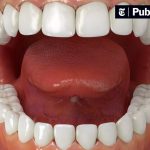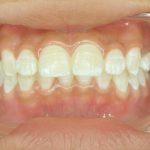Home Remedies: Quick Fixes for Translucent Teeth

Home remedies have been used for centuries to address various health concerns, and translucent teeth are no exception. Translucent teeth occur when the enamel, the outer layer of the teeth, becomes thin, revealing the dentin layer underneath. This can lead to sensitivity and a less-than-ideal appearance. While professional dental treatment is always recommended, there are also several quick fixes you can try at home to help alleviate the issue. One of the most effective home remedies for translucent teeth is oil pulling. This ancient Ayurvedic practice involves swishing oil around in the mouth for 10-20 minutes before spitting it out. Coconut oil is a popular choice for oil pulling, as it has antibacterial properties that can help remove harmful bacteria from the mouth. Oil pulling is thought to help strengthen the enamel and reduce sensitivity, making it a great option for those with translucent teeth. Other home remedies for translucent teeth include using baking soda to gently polish the teeth, drinking green tea to help strengthen the enamel, and avoiding acidic foods and drinks that can further damage the teeth. With a little effort and consistency, these simple home remedies can help improve the appearance and health of translucent teeth.
Translucent teeth are a dental condition that occurs when the enamel of the teeth becomes thin, allowing the underlying dentin to show through. This can result in teeth that appear almost see-through or have a milky or grayish appearance. Translucent teeth can be caused by a variety of factors, including genetics, age, and certain medications. They can also be a symptom of more serious dental issues, such as tooth decay or enamel erosion. While translucent teeth can be a cosmetic concern, they can also be a sign of underlying dental problems, so it is important to consult with a dentist if you are experiencing this condition. There are also home remedies and quick fixes that can help improve the appearance of translucent teeth, including proper dental hygiene, dietary changes, and enamel-strengthening treatments.
Maintaining good dental health is crucial for overall well-being. Teeth are not only essential for chewing and speaking, but they also contribute to a beautiful smile, boosting one’s confidence. Neglecting dental hygiene can lead to various oral problems such as tooth decay, gum diseases, bad breath, and even tooth loss. Poor dental health can also affect the body’s immune system, increasing the risk of heart diseases, diabetes, and respiratory infections. Therefore, it is important to adopt healthy oral habits such as brushing and flossing regularly, eating a balanced diet, and visiting the dentist regularly to prevent dental issues and maintain a healthy, bright smile.
Baking Soda and Lemon Juice

Baking soda and lemon juice are two common household ingredients that have been known for their teeth whitening properties. Baking soda is a mild abrasive that helps remove surface stains on teeth, while lemon juice contains citric acid which helps to lighten the color of teeth. When combined, they create a powerful teeth whitening solution that can help transform translucent teeth into a brighter, healthier smile. To make a baking soda and lemon juice remedy, mix one teaspoon of baking soda with the juice from half a lemon to form a paste. Apply the paste to your teeth using a toothbrush or your finger and leave it on for a minute or two. Then, rinse your mouth with water and brush your teeth as usual. It’s important to note that while this remedy can be effective, it should not be used too frequently as the acidity of the lemon juice can damage tooth enamel over time. It’s recommended to use this remedy no more than once a week.
Baking soda and lemon juice are two common household ingredients that can help whiten teeth. Baking soda is mildly abrasive and can gently scrub away surface stains on teeth, while lemon juice contains citric acid, which can help to bleach teeth. When combined, the two ingredients create a powerful whitening solution that can remove stubborn stains and leave teeth looking brighter and more translucent. However, it’s important to use this mixture sparingly and not too frequently, as the citric acid in lemon juice can erode tooth enamel if used excessively. A weekly application is typically enough to see noticeable results.
If you’re looking for a quick and easy home remedy to brighten up your teeth, try using baking soda. Simply mix a small amount of baking soda with water to create a paste, and then apply the paste to your teeth using a toothbrush. You can also add a little bit of lemon juice to the mixture to enhance the whitening effect. Be sure to brush gently and avoid scrubbing too hard to prevent damage to your enamel. Rinse your mouth thoroughly with water after brushing, and repeat this process once or twice a week for best results. Baking soda is a natural and inexpensive way to remove stains and improve the overall appearance of your teeth.
Before using any home remedy to treat translucent teeth, it is important to consider a few precautions. Firstly, it is advisable to consult a dentist to determine the underlying cause of the condition. This is because translucent teeth may be a symptom of an underlying dental problem that requires professional intervention. Secondly, some home remedies may cause further damage to the teeth if used in excess or improperly, so it is important to follow the instructions carefully. Additionally, individuals with allergies or sensitivities to certain ingredients should avoid using remedies that contain those substances. Lastly, it is important to maintain good oral hygiene practices such as brushing twice a day and flossing regularly to prevent further damage or decay to the teeth.
Oil Pulling
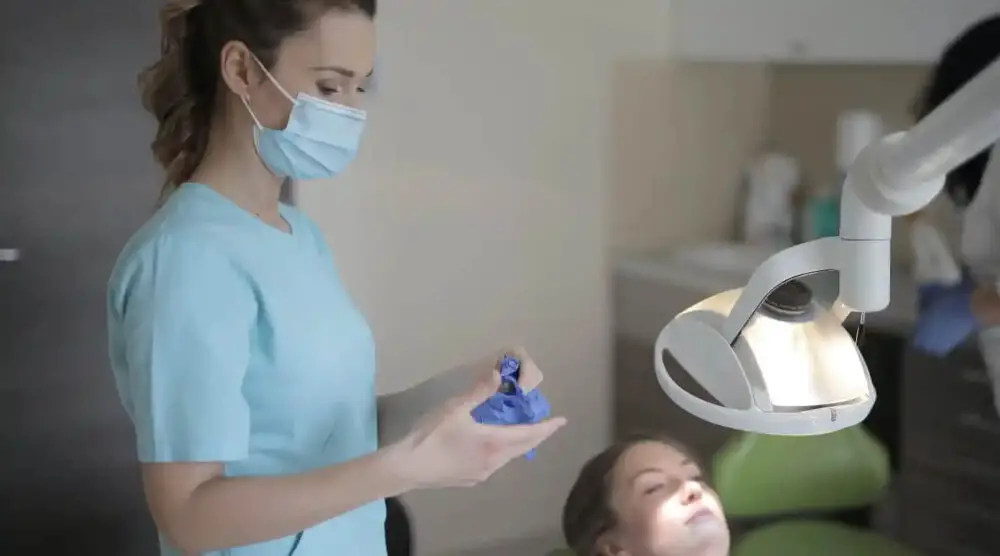
Oil pulling is an ancient Ayurvedic technique that has been used for centuries to improve oral health. It involves swishing a tablespoon of oil, usually coconut or sesame oil, in your mouth for about 20 minutes before spitting it out. This process is believed to remove toxins from the mouth, prevent plaque buildup, and improve overall oral hygiene. Oil pulling has gained popularity in recent years as a natural alternative to traditional mouthwash. While oil pulling may not be a substitute for regular brushing and flossing, it can be a useful addition to your daily oral hygiene routine. Research has shown that oil pulling can reduce the amount of harmful bacteria in the mouth, which can lead to better oral health. Additionally, oil pulling may help to alleviate bad breath, reduce inflammation, and even whiten teeth. However, it is important to note that oil pulling should not be used as a replacement for proper dental care, and those with dental issues should consult their dentist before trying this technique.
Oil pulling is an ancient Ayurvedic practice that involves swishing oil in the mouth for 20 minutes to eliminate toxins and promote oral health. Coconut oil is the most common oil used for oil pulling, but sesame and sunflower oils are also suitable. Research has shown that oil pulling can reduce plaque, gingivitis, and bad breath. It can also help with translucent teeth by removing surface stains and strengthening tooth enamel. The oil acts as a natural cleanser, pulling out impurities and bacteria from the mouth. By incorporating oil pulling into your daily oral hygiene routine, you can achieve a brighter, healthier smile.
Oil pulling is an ancient Ayurvedic practice that involves swishing oil in your mouth for a few minutes to improve oral health. Different types of oil can be used for oil pulling, but the most commonly used oils are coconut oil, sesame oil, and sunflower oil. Coconut oil contains lauric acid, which has antimicrobial properties that can help fight harmful bacteria in the mouth. Sesame oil has anti-inflammatory properties that can help reduce gum inflammation and prevent plaque buildup. Sunflower oil is high in vitamin E, which can help strengthen gums and teeth. All of these oils are effective for oil pulling and can help improve the overall health of your teeth and gums.
Oil pulling is a traditional Ayurvedic practice that involves swishing oil in the mouth for 20 minutes before spitting it out. This technique is believed to improve oral health by removing harmful bacteria and promoting healthier gums and teeth. To perform oil pulling, start by choosing a high-quality oil such as coconut, sesame, or olive oil. Take one tablespoon of the oil and swish it around in your mouth for 20 minutes, making sure to move the oil around all areas of your mouth. After 20 minutes, spit the oil out into a trash can and rinse your mouth thoroughly with warm water. Repeat this process daily for best results. It is also important to note that oil pulling should not be used as a substitute for regular dental appointments and oral hygiene practices.
Oil pulling is an ancient Ayurvedic practice that involves swishing oil in the mouth for a few minutes to improve oral health. It is believed to remove toxins and bacteria from the mouth and promote overall oral hygiene. To reap the benefits of oil pulling, it is recommended to do it daily, preferably in the morning before eating or drinking anything. The ideal duration for oil pulling is around 15-20 minutes, but if you’re new to the practice, you can start with 5-10 minutes and gradually increase it over time. It is important to note that oil pulling is not a substitute for brushing and flossing, but rather a complementary practice to maintain healthy teeth and gums.
Hydrogen Peroxide
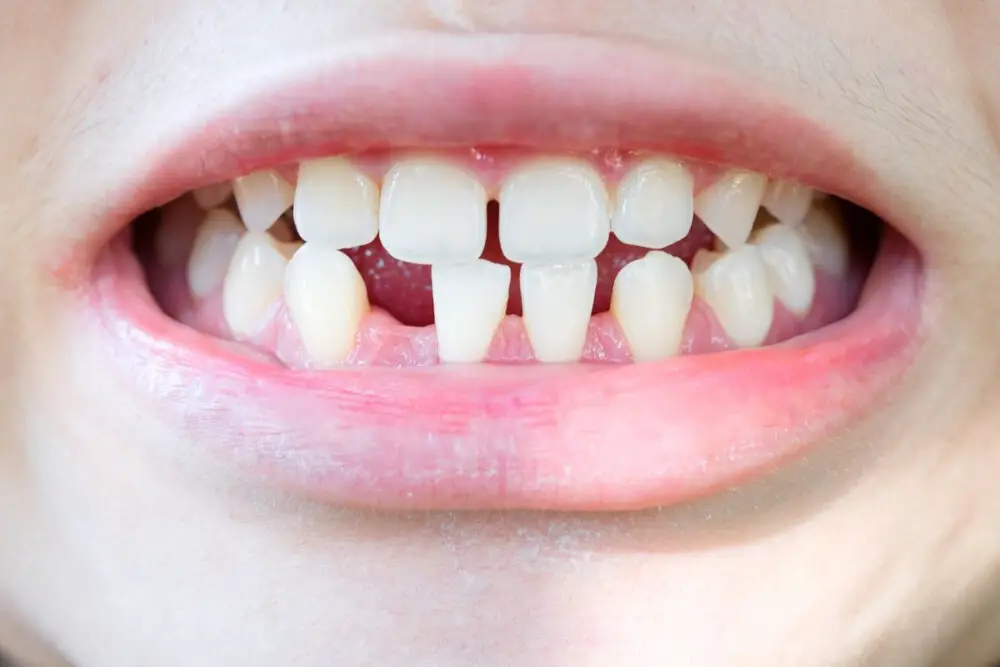
Hydrogen peroxide is a chemical compound that has been used for a variety of purposes for decades. It is a pale blue liquid that is slightly denser than water and is widely used as a bleaching agent and antiseptic. In the dental industry, hydrogen peroxide is used to whiten teeth, as it has the ability to remove stains and discoloration from the teeth. It is also used as a mouthwash and in toothpaste to prevent gum disease and tooth decay. When it comes to home remedies for translucent teeth, hydrogen peroxide is a popular choice due to its effectiveness in removing stains and discoloration. Many people use a mixture of hydrogen peroxide and baking soda to make a paste, which they then apply to their teeth for a few minutes before rinsing off. This method can be effective in removing surface stains, but it is important to use caution as hydrogen peroxide can cause irritation and sensitivity if used excessively. It is recommended to consult with a dentist before using hydrogen peroxide for teeth whitening and to follow the instructions carefully. Overall, hydrogen peroxide can be a useful tool in improving the appearance of translucent teeth, but it should be used with caution and under the guidance of a dental professional.
Hydrogen peroxide is a powerful bleaching agent that can help to whiten translucent teeth. The compound works by breaking down the stains and discoloration on the surface of the teeth, leaving them looking brighter and more radiant. To use hydrogen peroxide for this purpose, simply mix a small amount of the solution with water and swish it around in your mouth for a few minutes each day. Be sure to follow the instructions carefully, as too much hydrogen peroxide can cause damage to the teeth and gums. With regular use, hydrogen peroxide can help to restore the natural translucency of your teeth, giving you a brighter, more confident smile.
Hydrogen peroxide is a popular and effective home remedy for teeth whitening. To use it, dilute the hydrogen peroxide with water so that it is a 50/50 mix. Swish the solution in your mouth for 30 seconds to a minute, making sure to spit it out afterwards. Be careful not to swallow any of the solution, as it can be harmful if ingested in large amounts. Repeat this process once a day for a week or until you achieve the desired level of whiteness. It’s important to note that while hydrogen peroxide can be effective, it can also cause sensitivity in some people. If you experience any discomfort, discontinue use and consult with your dentist.
While hydrogen peroxide may seem like a quick fix for translucent teeth, it should be used with caution. Firstly, it is important to dilute the hydrogen peroxide before using it, as undiluted solutions can cause irritation or even chemical burns. Additionally, it should not be swallowed as it can cause nausea, vomiting, and potentially more serious health issues. It is also recommended to avoid using hydrogen peroxide if you have any open wounds in your mouth or if you have sensitive teeth or gums. Finally, it is important to use hydrogen peroxide in moderation and not to rely on it as a long-term solution for translucent teeth.
Activated Charcoal
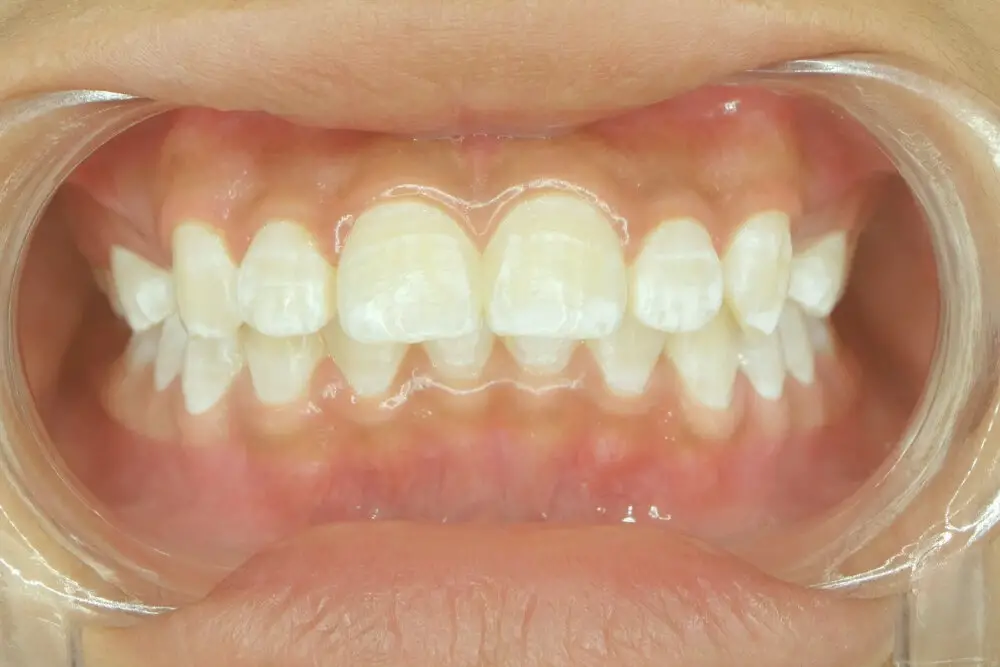
Activated charcoal has gained popularity as a home remedy for achieving whiter teeth. It is a form of carbon that is treated with oxygen to make it more porous, which gives it the ability to effectively remove impurities. The porous nature of activated charcoal allows it to bind with stains and toxins on the surface of the teeth, delivering impressive results. Although it is black in color, it is incredibly effective in whitening teeth, making it a popular choice among people who want to improve their smile. Apart from its teeth whitening benefits, activated charcoal is also known for its ability to improve overall oral health. It has antibacterial and anti-inflammatory properties that can help reduce the risk of cavities, gum disease, and bad breath. Activated charcoal can also help to balance the pH levels in the mouth, creating an environment that is less conducive to the growth of harmful bacteria. If you’re looking for a natural and effective way to achieve brighter and healthier teeth, activated charcoal may be just what you need.
Activated charcoal is a popular home remedy for teeth whitening. It works by adsorbing (not absorbing) impurities and stains on the surface of the teeth. This is because activated charcoal has a large surface area with many tiny pores that attract and trap molecules, including those responsible for staining the teeth. When used as a toothpaste or in a mouthwash, activated charcoal binds to the surface of the teeth and removes surface stains, leaving the teeth looking brighter and whiter. However, it’s important to note that activated charcoal can be abrasive, so it should be used sparingly and not too often to avoid damaging the enamel of the teeth.
Activated charcoal is a popular home remedy for treating translucent teeth. To use activated charcoal, start by wetting your toothbrush and dipping it into activated charcoal powder. Gently brush your teeth with the charcoal for two minutes, paying close attention to the translucent areas. After brushing, rinse your mouth thoroughly with water and spit it out. Be careful not to swallow the charcoal, as it can cause digestive issues. It’s important to note that activated charcoal should only be used occasionally, as it can be abrasive and potentially damage tooth enamel if used too frequently.
Before using activated charcoal to whiten your teeth, there are a few precautions to consider. Firstly, it’s important to note that activated charcoal can be quite abrasive and may damage the enamel on your teeth if used too frequently or too vigorously. Secondly, it’s crucial to ensure that the charcoal you’re using is food-grade and not intended for other purposes, such as fuel or art supplies. Additionally, if you have any existing dental problems, such as gum disease or sensitive teeth, it’s best to consult with your dentist before using activated charcoal to avoid any potential complications. Lastly, it’s recommended to use activated charcoal in moderation and not as a replacement for regular dental hygiene practices such as brushing and flossing.
Translucent teeth can be a cause of concern for many people, as it can affect the appearance of their smile. Fortunately, there are several home remedies that can help improve the condition of translucent teeth. One of the most common remedies is oil pulling, which involves swishing coconut oil or sesame oil in the mouth for several minutes. Another effective remedy is using a mixture of baking soda and water to brush the teeth, as it can help remove stains and brighten the teeth. Additionally, consuming foods that are high in calcium and vitamin D, such as milk and cheese, can help strengthen the teeth and improve their appearance. By incorporating these simple home remedies into their daily routine, individuals can achieve a brighter, healthier smile.
Maintaining good dental health is essential for overall wellbeing. Neglecting oral hygiene can lead to various dental problems such as tooth decay, gum disease, bad breath, and even tooth loss. Poor dental health not only affects the mouth but can also lead to systemic health problems such as heart disease, diabetes, and respiratory infections. Therefore, it is crucial to practice proper dental care, which includes regular brushing, flossing, and dental check-ups. In addition to these basic practices, home remedies such as oil pulling, baking soda, and apple cider vinegar can be effective in promoting dental health. By taking care of our teeth and gums, we can prevent serious health issues and maintain a healthy smile.
While home remedies can provide temporary relief for translucent teeth, it’s important to seek professional dental care if necessary. A dentist can accurately diagnose the cause of your translucent teeth and provide targeted treatment to address the underlying issue. Neglecting to seek professional care could lead to further damage and potentially irreversible consequences. Regular dental check-ups and cleanings can also help prevent translucent teeth and other dental issues from developing in the first place. Don’t hesitate to make an appointment with a trusted dentist to ensure the health and longevity of your smile.
Conclusion

In conclusion, home remedies can provide quick fixes for translucent teeth and improve the overall appearance of your smile. Incorporating natural remedies like oil pulling, baking soda, and hydrogen peroxide can help strengthen the teeth, remove surface stains, and promote a healthy oral environment. However, it is important to note that these remedies are not a substitute for professional dental care and should be used in conjunction with regular dental checkups and cleanings. By taking a proactive approach to oral health and utilizing the power of nature, you can achieve a brighter, healthier, and more confident smile.




